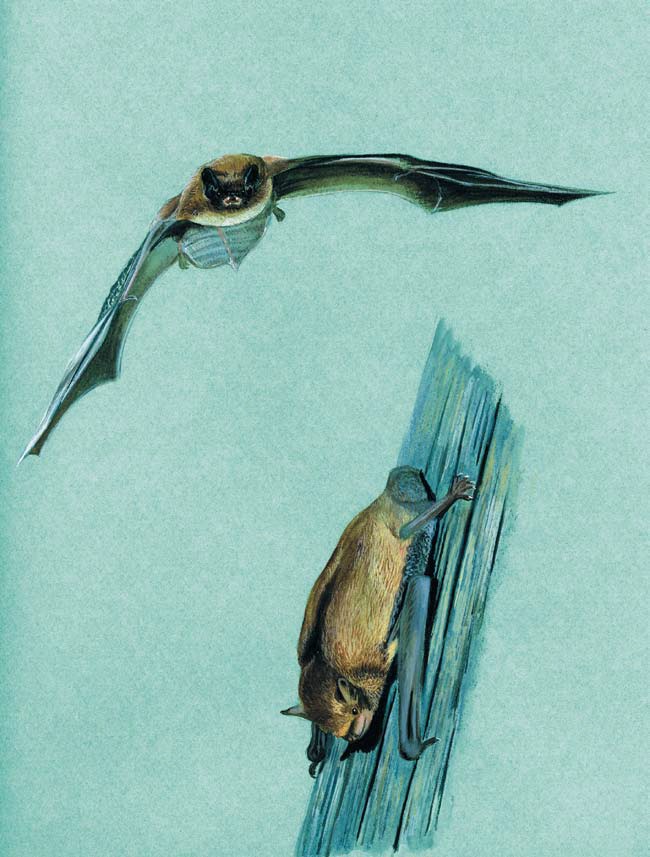The dwarf bat is the smallest European bat; its length, between head and body is 3-5 cm, while the wingspan of 18-24 cm. The hair is reddish brown or dark on the back while in the abdomen it is yellowish brown. It has an agile, fast and irregular flight, with swoops and circular paths.
The species is very versatile in terms of habitat; it is strongly anthropophilic, that is, it frequents much the urban environments. It can be found from sea level up to about 2,000 m altitude.
As summer shelters it uses the cracks in the rocks and the hollow trees but also any type of space available in the buildings (attics, cracks in the walls, shutter boxes). For hibernation the dwarf bat needs caves, buildings or hollow trees. In some cases the places where it hibernates coincide with those where it spends the summer. Often it shares the shelters with other species.
It is a sedentary species and the movements between the summer and winter shelters are generally less than 20 km. It is not uncommon to surprise it in flight of foraging even in the middle of winter and in broad daylight.
Mating occurs between late summer and autumn; males attract females to shelters and form harems. The reproductive colonies may contain 50-100 females; each gives birth to 1-2 newborn, between June and July, which become independent after 4 weeks.
The Dwarf Bat feeds on various types of insects caught on the fly and for hunting it follows flight paths along linear structures (hedges, wooded margins or tree-lined avenues); it can also be found under streetlights.
It frequently emits characteristic squeaks that are easily audible. It is known for the phenomenon of the 'invasions' carried out between August and October; groups of hundreds of individuals, composed mainly of males and females of the year, instead of taking refuge in safe and hidden areas prefer to crowd in inhabited centers or open places, especially if illuminated even at night.
The species is included in Annex IV of the Habitats Directive 92/43/EEC. Its threats are represented by the use of pesticides and colony disturbance.
